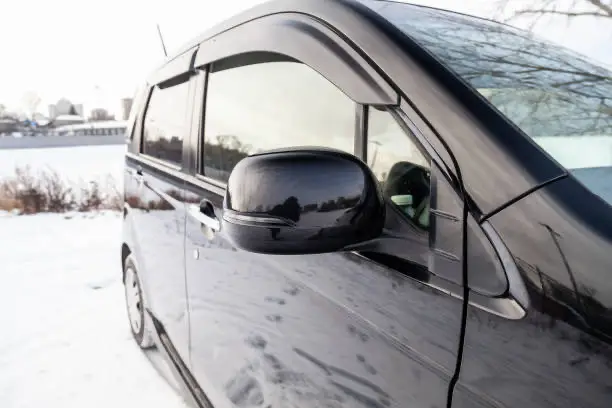- How to Fix Engine Mount Issues in Your 2008 Honda Accord
- Why 2008 Accord Engine Mounts Fail (2025 Update)
- Professional vs DIY Replacement Costs
- Prolonging Engine Mount Life in Modern Conditions
- FAQ
Are you experiencing unusual vibrations or clunking noises coming from under the hood of your 2008 Honda Accord? This guide provides step-by-step insights on diagnosing engine mount issues and outlines both DIY procedures and professional repair cost breakdowns. Dive in to learn how a worn engine mount can affect your ride and what you can do about it!
How to Fix Engine Mount Issues in Your 2008 Honda Accord

When you notice performance changes, it’s time to investigate your engine mount. Here are three immediate signs that you need attention:
Steering Wheel Vibrations:If the steering wheel shudders while idling or during low-speed maneuvers, it could indicate that the engine mount is compromised.
Clunking Noises:Listen for unusual clunking or thumping sounds during acceleration. These noises may signal that the mount is failing to keep the engine stable.
Visible Engine Movement:Open your hood and check for excessive engine movement. Ideally, the engine should remain secure without more than a 1/2 inch of shifting.
Quick Diagnostic Checklist
To confirm a potential engine mount issue, follow these simple checks:
Inspect for rubber deterioration on the mounts, which might appear cracked or worn down.
Measure the engine movement; any displacement over 0.5 inches could be problematic.
Look for the presence of oil contamination on hydraulic mounts, which can further deteriorate the rubber.
Why 2008 Accord Engine Mounts Fail (2025 Update)
Your Honda Accord’s engine mounts are designed for durability, but environmental factors play a role in their lifespan. Here’s what you need to know:
Climate Impact on Mount Durability
In regions with high temperatures, like those experienced in parts of the UAE or Saudi Arabia, the summer heat can accelerate rubber degradation. Studies have shown that elevated temperatures can increase wear by up to 40% compared to more temperate areas. This accelerated deterioration means that vigilant checks are necessary, especially during the hotter months.
Critical Replacement Intervals
It’s crucial to know when to inspect and replace your engine mount to avoid further damage. Below is a guide based on mileage:
Mileage | Recommended Action |
|---|---|
80,000 km | Conduct the first inspection |
120,000 km | Perform a hydraulic fluid check |
160,000 km | Prepare for a full replacement |

Professional vs DIY Replacement Costs
Understanding costs can help you decide whether to tackle the repair yourself or seek professional assistance.
Service Center Pricing (AED/SAR)
Parts:Typically range from AED/SAR 300 to 600
Labor:Estimated between AED/SAR 400 to 800
Total Cost:Approximately AED/SAR 700 to 1,400
DIY Cost Breakdown
If you prefer a hands-on approach, consider these expenses:
OEM engine mount kit:Around AED/SAR 280
Rental cost for a torque wrench:Approximately AED/SAR 50 per day
Estimated replacement time:About 2.5 to 3 hours
Prolonging Engine Mount Life in Modern Conditions
With proper care, you can extend the lifespan of your engine mounts. Here’s how to maintain them effectively:
2025-Recommended Maintenance
Use a silicone-based protectant on the engine mounts every six months to minimize wear.
Avoid frequent short trips (less than 5 km) as they may prevent your engine from reaching the optimal temperature, which could impact mount longevity.
Clean your engine bay on a quarterly basis to remove oil spills and debris that might harm the mounts.
Upgraded Mount Materials
Recent advancements have introduced graphene-infused rubber compounds that can last up to 35% longer than traditional materials. These upgraded mounts are increasingly available at major auto parts retailers in Dubai and other GCC markets, making them a cost-effective upgrade for your 2008 Accord.

FAQ
Q1:How can I tell if my Honda Accord 2008 engine mount needs replacement?
A:If you experience persistent steering wheel vibrations, clunking noises, or visible engine shifting, it’s a strong indication that the engine mount is wearing out or has failed. Additionally, symptoms such as unusual engine movement when idling or during acceleration warrant a closer inspection. It is always best to have any unusual behavior checked promptly. Make sure to inspect the rubber for signs of deterioration and contamination.
Q2:What are the common symptoms of a failing engine mount?
A:Common symptoms include excessive vibrations felt through the steering wheel, audible clunks during throttle changes, and noticeable engine movement under the hood. These signs result from the loss of proper support and stability in the engine mount. You might also observe cracked or worn out rubber, which further confirms the need for a replacement. Behavioral changes in your vehicle’s handling are critical indicators to watch for.
Q3:Can I perform a DIY replacement of the Honda Accord 2008 engine mount?
A:Yes, you can perform a DIY replacement if you have the right tools and a clear understanding of the process. Most DIY enthusiasts report spending around 2.5 to 3 hours for the job. However, careful attention must be paid to torque specifications and proper alignment. If you’re uncertain or face difficulties during the process, consulting a professional can help avoid potential damage and ensure safety.
Q4:What maintenance steps can help prolong the life of my engine mounts?
A:Regular maintenance is key to extending the lifespan of your engine mounts. Use a silicone-based protectant at least twice a year to shield the rubber components. Ensure your engine reaches optimum operating temperature by avoiding very short trips and clean the engine bay periodically to prevent oil and debris build-up. Upgrading to advanced materials like graphene-infused mounts can also enhance durability over time.
This article is for reference only, please adhere to local laws and regulations.
Read More:
2025 Hiace Tyre Size Guide:Choosing the Right Fit for Optimal Performance
Toyota Corolla 2025: A Comprehensive Guide
2025 Hiace Oil Filter Guide:Essential Maintenance Tips
2 / 20













